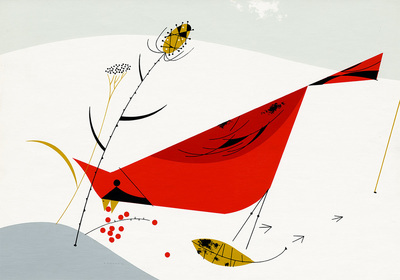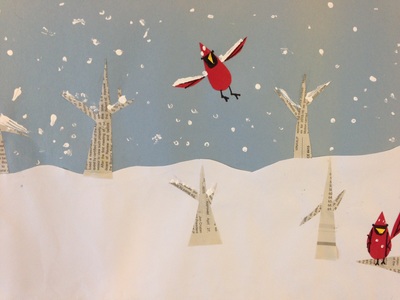|
Louise Nevelson was an American (after immigrating from Russia as a child) sculptor most well-known for her monochromatic (all one color) assemblages. Her assemblages usually featured various sized wooden boxes with random objects such as chair legs, tools, car wheels, etc placed within the boxes Everything was then painted the same color. Mrs. Nevelson helped to pave the way for female artists around the world. This was probably one of my favorite projects all year. I saw the idea on Pinterest and decided to tie in Louise Nevelson as an art history reference. We started out by folding two sheets of printer paper into quarters. Those quarters were cut apart and then glued onto a larger sheet of white paper. For this project, I required that everyone use white paper. From there, I demoed how to manipulate paper in different ways by folding it, crumpling it, bending it, curling it, etc. We talked about how doing these different processes to the paper created different textures. Texture is how something feels. We briefly talked about how texture can be broken down into two categories: actual and implied. Implied texture is when an artwork conveys how something might feel such as a lamb LOOKING like it is soft. Actual texture is how something ACTUALLY feels. So for our project, we focused on actual texture.
The students spent three or four days manipulating paper. It was pretty open-ended and allowed for students to experiment with the paper to create new textures that I hadn't thought of. I was so so sooooooo happy with how this project turned out.
4 Comments
This was a quick project that only a couple of my 3rd grade classes got to do. I used it as a filler because we lost a few of our art classes due to practicing for the winter concert (which they did fabulous at!). Mr. Harper was an American illustrator who is most well-known for his depictions of wildlife. His works are featured often in calendars, prints, and books. He referred to his style as minimal realism. This meant that he attempted to depict his animals as realistically as he could with as few shapes, colors, lines, and textures as he could. To get this project rolling, students chose a pastel colored background. Then they cut some curves into a white sheet of paper which created our snowy ground. Then we used newspaper to cut various shaped triangles out which we then glued together to become trees. The white newspaper with the black text made for a good birch tree effect.
On our second day, we began to create our cardinals. We took a look at how Mr. Harper used simple shapes to create more elaborate pictures. Our cardinals could be broken down into tear-shaped bodies with curved wings. A black "mask" and beak were added to each bird. On the final day, we finished up our birds. We added a couple details to the birds with sharpies, such as eyes, legs, and feathers. Lastly, we used white paint and Q-tips to create some falling snow. |
Devon CalvertHarmony and Consolidated Elementary Art Teacher in Milton, WI. UW-Eau Claire graduate. WAEA President. Apple Teacher. Archives
March 2019
Categories
All
|


















 RSS Feed
RSS Feed
